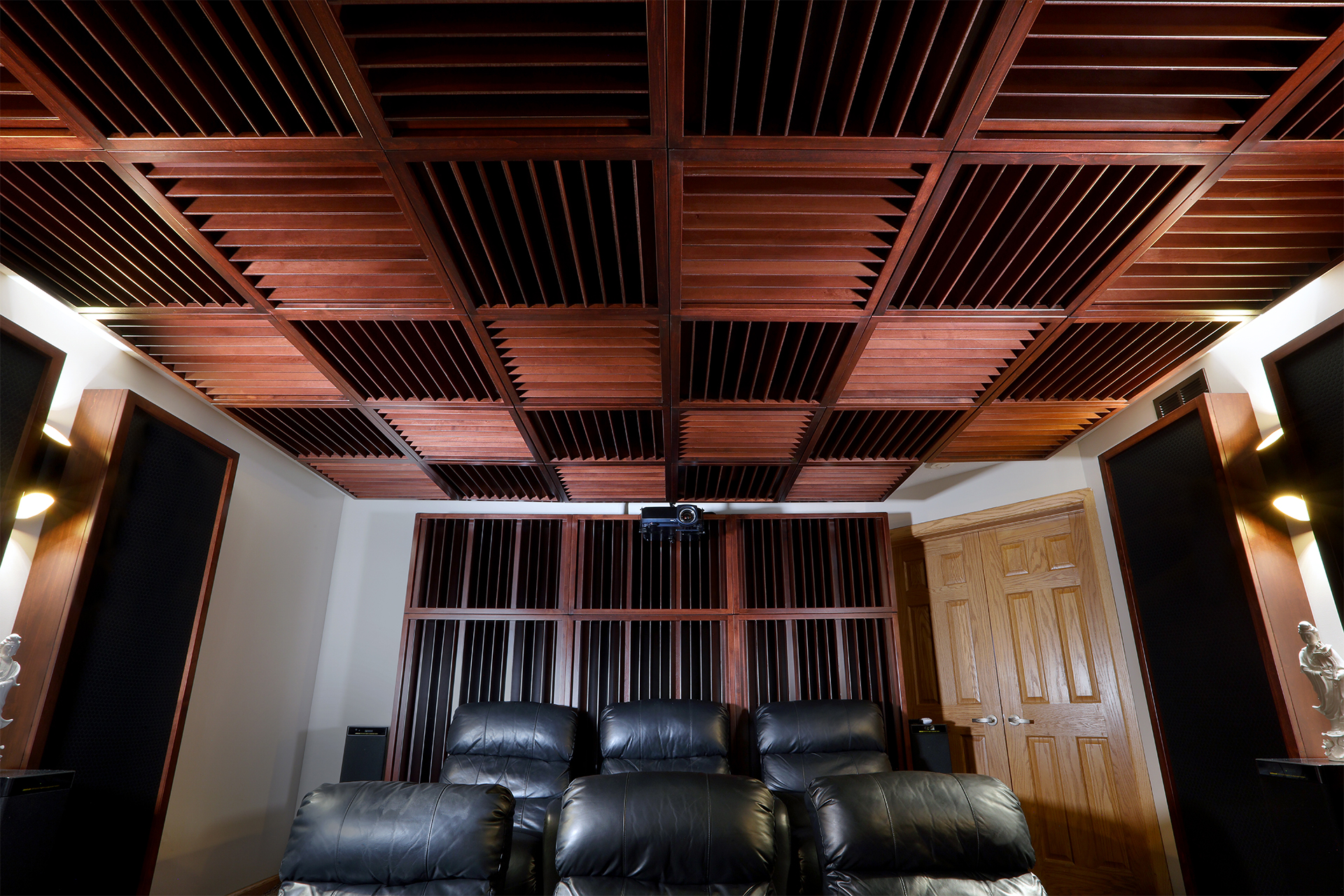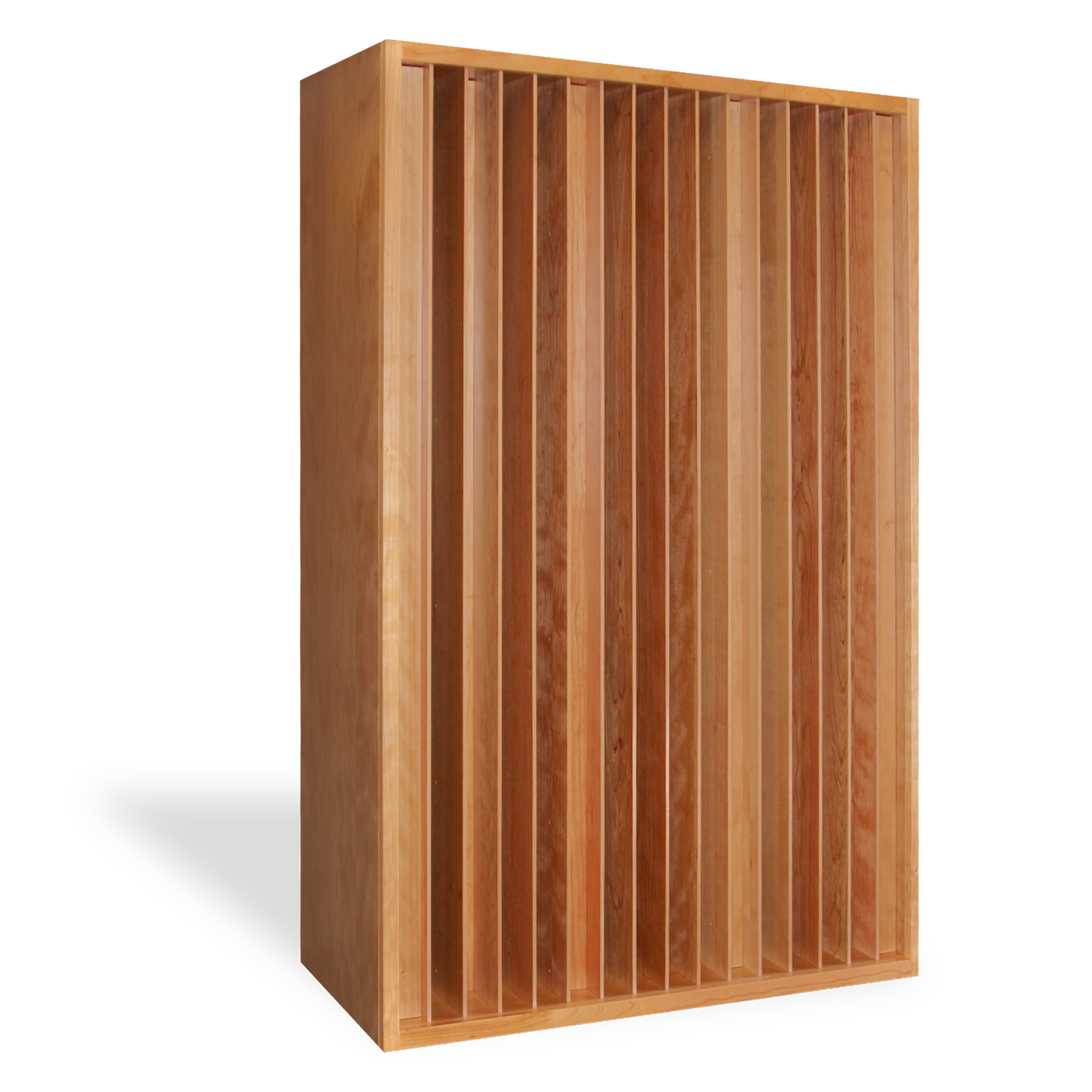Skyline® Diffuser vs Quadratic
A Skyline® diffuser is a product name for a two-dimensional diffuser. A Skyline® diffuser is really a one-dimensional quadratic diffuser turned inside out. When you are comparing a skyline diffuser vs quadratic diffusion you are really comparing the same technology just in a different form. A quadratic diffuser comes in two main flavors. You have one-dimensional diffusers and two-dimensional diffusers. A two-dimensional diffuser is created by using a one-dimensional diffuser. A two-dimensional diffuser can be created using a one-dimensional diffuser by positioning the one-dimensional diffuser in the opposite direction.
Quadratic Diffuser: https://www.acousticfields.com/quadratic-diffusion-diffused/
One – Dimension Diffuser
A one-dimensional diffuser comes in one form that you position in two orientations. A one-dimensional diffuser can be positioned in a vertical direction or orientation and also in a horizontal orientation. A vertically positioned one-dimensional diffuser will distribute energy out in a horizontal array that is 180 degrees of diffusion. A horizontally positioned diffuser will spread the energy out in a vertical 180-degree array of energy. If you combine both vertical and horizontal positioning of one-dimensional diffusers, you create a two dimensional spreading out of sound energy. When you look at a skyline diffuser vs quadratic diffuser you are looking at two dimensions of diffusion combined in one product.
Wells of Sound
If you look at how a one-dimensional diffuser you see a series of wells or troughs. These wells or troughs are designed and are based upon a complex formula that involves prime numbers such as 7, 11, 13, 17, 19, and 23. Each well depth is based upon a quarter-wave rule that states that the well depth is 25% of the total wavelength that is diffused. If you take a 12″ well depth and multiply it by 4 for quarter wavelength rule, you produce a total wavelength of 48″ or 4′. Dividing the speed of sound by 4′ you reach a frequency of diffusion of 280 Hz. Different prime numbers produce different frequencies. Let’s look at a one-dimensional diffuser based on the prime number 13.
AF Quadratic Diffusers: https://www.acousticfields.com/product-category/sound-diffusion/qd-series/
Prime Numbers
A prime number 13 will produce a diffuser with 12 separate wells or troughs. Each weel depth is different and corresponds to quarter wavelength rules. The depth of each well in the series of wells is 1″, 4″, 9″, 3″, 12″, 10″, 10″,12″, 3″, 9″, 4″,1″. We have used the 12″ depth as an example. Let’s use the 9″ depth and illustrate another frequency that is based upon quarter wavelength rules. If we take 9″ and multiply it by 4 for quarter wavelength rules, we have 36″ total (9 x 4 = 36). If we then take 36″ or 3′ and divide it into the speed of sound at 1130 ft./sec. we have 1130/3 = 377 Hz. This means that a 9″ depth will produce a diffused frequency of 377 Hz. You can repeat this procedure for all the other depths in the prime 13 quadratic diffusers.

Ceiling Diffusers in Studio
Skyline® Diffuser
A Skyline® diffuser takes these same well depths and turns them inside out. Instead of using a well depth of 9″ they turn the well depth of 9″ into a block that is 9″ long. By inverting the well depth into a block that is the same length as the well depth, you create a two-dimensional diffuser. When energy strikes the 9″ long block it is diffused back at the 377 Hz. frequency in two dimensions within the room. The same thing happens with the other blocks. By having a series of blocks that are the same length as a quadratic diffuser depths, you create two dimensions of diffusion in the same surface area. You can create the two-dimensions of diffusion using one-dimensional diffusion arranged both vertically and horizontally in an alternating pattern.
Distance Dependent
When using any diffuser on the surface area of a critical listening room, you must be aware of distances. Diffusers receive energy from whatever room source that is producing sound and then sends that energy back into the room is a 180-degree hemispherical array of energy. We must have enough distance for the diffuser to diffuse its lowest octave of energy produced by the diffuser back into the room. Our endpoint for the diffused energy is the ears of the person receiving the energy. Let’s use out prime number 13 diffuser as an example of the required distance. We know that the lowest energy diffused is 280 Hz. We also know that 280 Hz. wavelength is 4′. With a 4′ wavelength to fully complete its cycle, we will need a minimum of 4′ in distance. However, that is cutting things too close. A good rule of thumb is to take the 4′ distance and add 50% or another 2′. This would make the minimum distance for a prime number 13 quadratic diffuser to be used at 6′ from the diffuser to the listener’s ears. This distance rule applies whether it is a skyline diffuser vs quadratic or any other prime number sequence.
About Us at Acoustic Fields: https://www.acousticfields.com/about/








